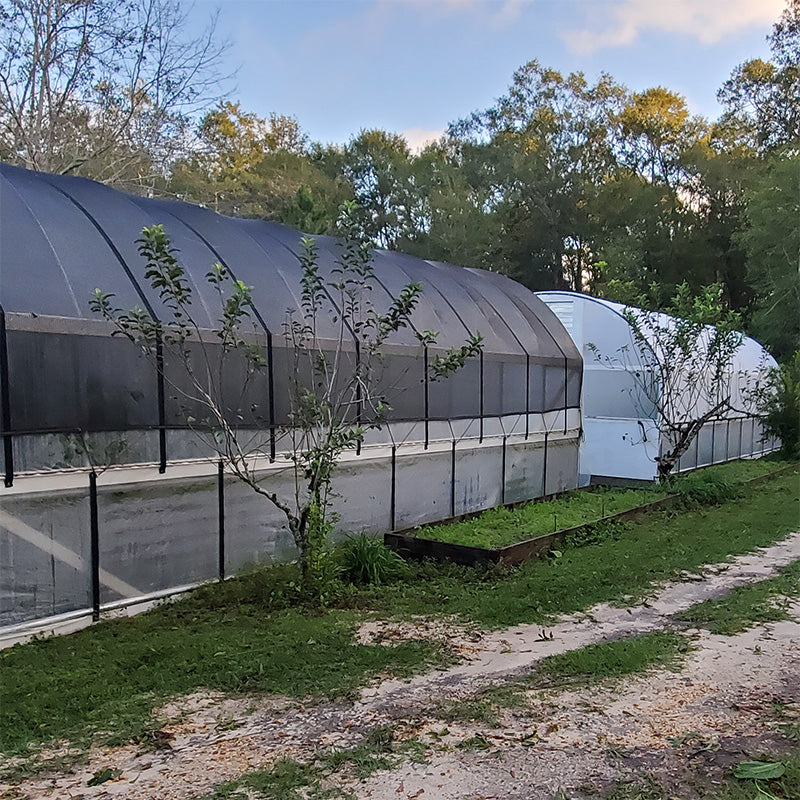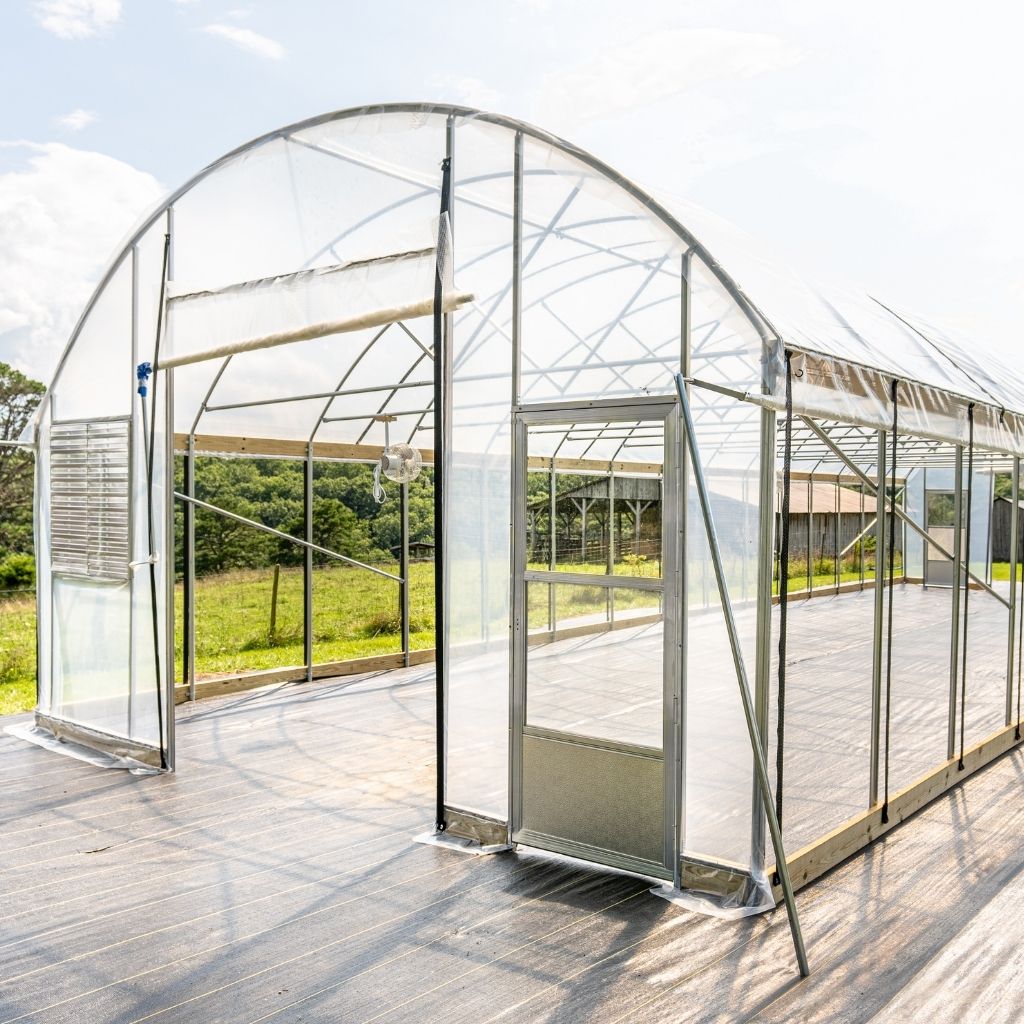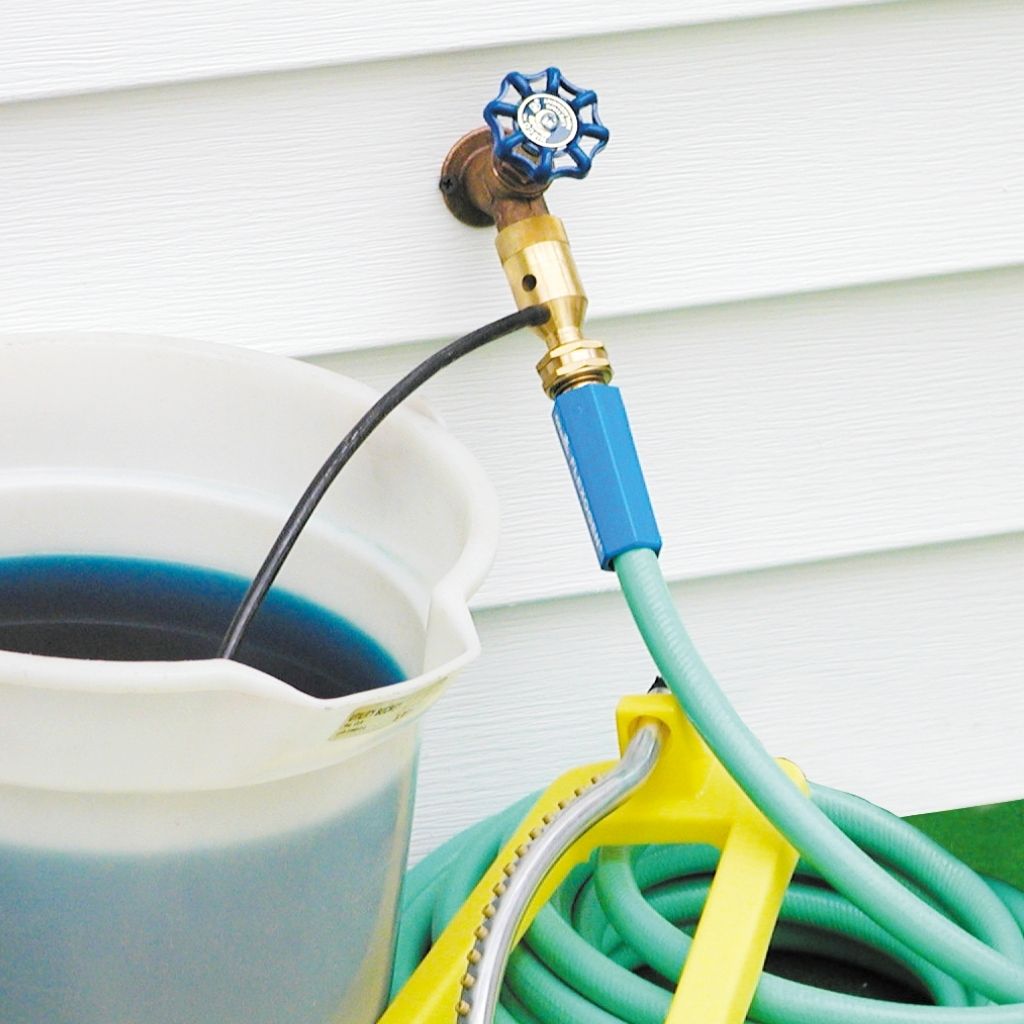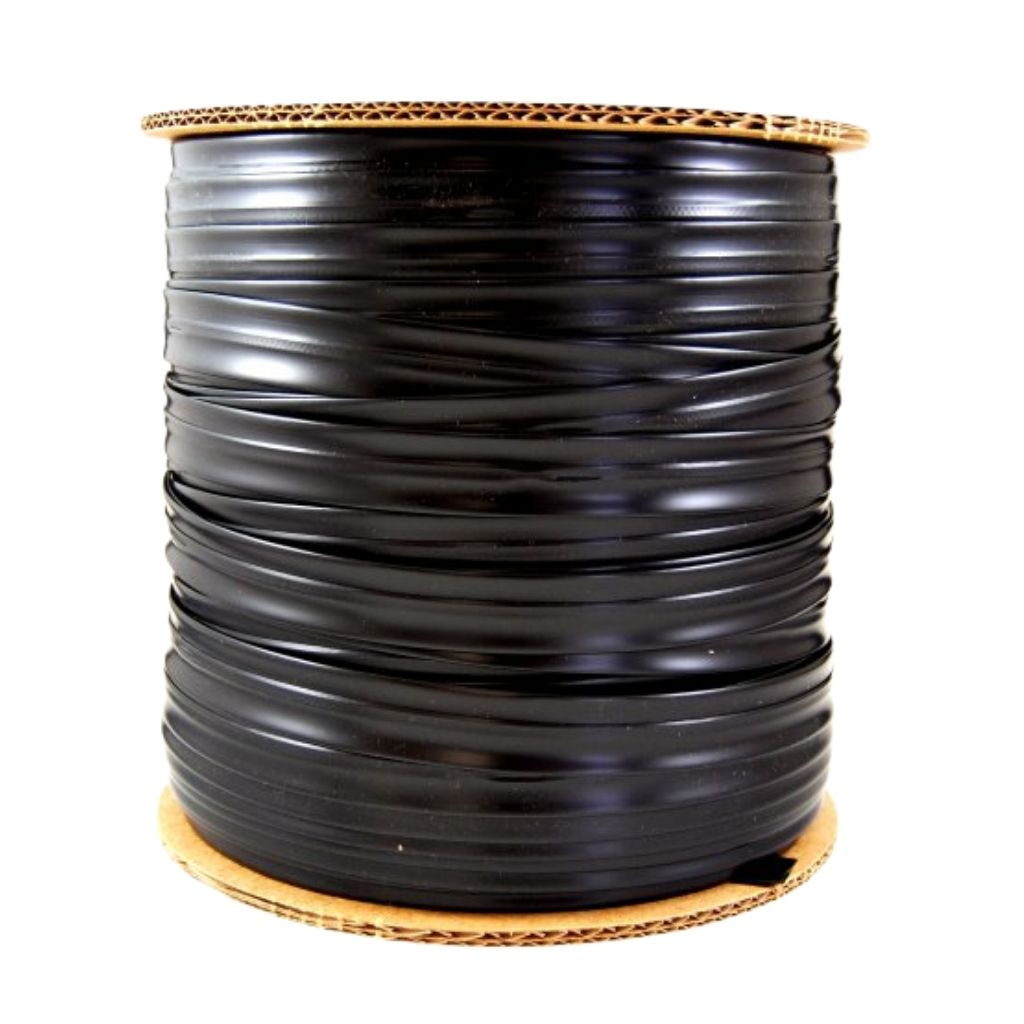Common Greenhouse Invasive Plants
Common Greenhouse Invasive Plants
Each acre of cropland is said to contain 50-100 million weed seeds from decades of growing seasons. I spend a good hour each day in the greenhouse plucking weeds from the rows, and beds. There are a few plants common in a hoop house. Oxalis, an invasive low-level plant with clover-like leaves, spreads through seed, and bulb roots that must be removed by hand, or a precision hoe, and weeder.

I noticed a few days after I hoed the lettuce rows that the oxalis had taken root again even after being pulled up by its roots. The resilient plant, oxalis, despite all odds, rooted back into the soil. This required keen eye sight to sort through the arugula, as they are almost the same color, and sitting down to pluck each plant by the base and lift not just the stem, but even the roots out or else it will grow back weeks later. Oxalis suppresses the growth of other plants by absorbing, and competing for essential nutrients. I gathered some helpful information on removing oxalis with a spray bottle and formula.
A similar method of foliage control is to drench leaves and immediate surrounding area with the following mixture:
- 500ml water of water mixed with
- 2 tablespoons of baking soda
- 1 squirt of common dish soap
Spray the solution onto foliage on a hot and dry day for the best effect. Repeat whenever new leaves appear, and continue to apply. A mix of baking soda sprayed on the leaves would be just as helpful as a mix of diluted hydrogen peroxide.

The common wild dandelion, although a good helper in building your soil, it is not the plant to keep around commercial produce. It grows flat against the ground, with its arugula like leaves.
Once the signature yellow flower dies, it releases hundreds of tiny parachute like seeds that float into garden beds waiting dormant. This garden weed has a large, semi deep rooted tape root and needs to be dug up in order to remove completely. There are tools specifically for dandelion weeds that have a curved, sharp blade to cut at the root base. The tool is called a dandelion puller, but looks similar to a wood chisel or screwdriver. The leaves, although they taste like green, grass, are edible and are similar to lettuces found in many gardens, and greenhouses.
Ground Ivy is another broadleaf, although it is a perennial. During the autumn and early winter months, ground ivy progresses under the shade of your taller plants, shallow rooted, but spreads quickly from its surface root system.

Dark green, it spreads under broccoli quickly, interweaving it and other root systems to make a tight canopy over the surface of the soil. Like oxalis, it reproduces by seed, rhizomes on its roots, so uprooting is necessary, and spreads fast by groundcover runners. Ground Ivy, otherwise known as creeping Charlie is common in most people's lawns, and gardens. Creeping Charlie is resistent to many herbicides on the market.
Crab grass is a common nuisance in the garden. The tough root base must be pulled from the ground, and because of the many seeds it produces on its main stem crab grass must be immediately taken out before it spreads itself from the window.

This weed is difficult to remove because it tends to wait for warm days to sprout, and most likely this will outlast the spring weeding and mulching routines after the crops have come up. When the weather is warm, crab grass goes into overdrive, sending out long stems grow so fast they may flower and go to seed before you even notice it between the carrot stems. The many seeds it sprouts, and the stems that sprout from its base cause it to be a tough plant to remove from the garden.
Summer weeds with plenty of problems in store for winter, and the oncoming spring get their beginning in late summer, and survive in the dirt over winter. During early spring through late autumn, you will run across a very persistent plant known as pigweed. A summer weed that is very difficult to uproot and completely remove is Redroot pigweed, a summer annual broadleaf plant, or red root pigweed.

The Redroot pigweed is found in most parts of the United States, and this particular variety is common in California. The Tennessee variety is known as smooth pigweed. The thistle-laden heavy seeded bud structure should be burnt with a weed-torch, or set fire to before removing, because the process of removing shakes the seeds into the dirt if it is not removed early before it activates flowering. Grappling the plant by the stem is not recommended, because of the thorns, and the bristle root structure holds to the ground with a tough grip. Pigweed is a summer weed, with protective thistles, and leaves with thousands of seeds forming the structure of the whole plant. It regrows back from the stalk you cut from so persistence is a must, as well as completely removing its root base from the soil. As you can tell, the bristle type roots make it difficult to pull completely out of the ground, as it holds against the soil structure, deeply penetrating the toughest cropland. Amaranthus hybridus is the Latin name for it, and is found mostly in row crops.

You may find other weeds that are hard to determine their name.
It's prickly hairs, and short stature, with typical leaf patterns make it difficult to identify. If you happen to know what this one is, please let the folks at growers solution know, as we are always are keen on gleaning new information to help others.

























